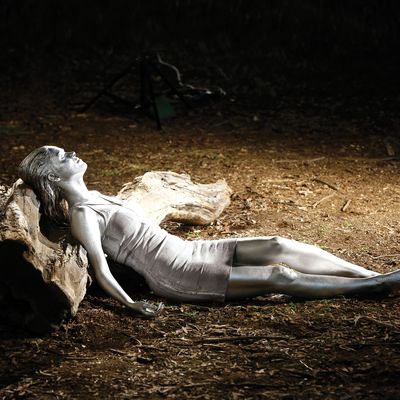
How do you memorialize something that is essentially immortal? There will be a time, presumably, when humans no longer watch episodes of CSI: Crime Scene Investigation or any of its three spinoffs (CSI: Miami; CSI: NY; and CSI: Cyber, which is still on the air) or read CSI-branded novels or comic books or play CSI board and video games or visit traveling museum exhibits like “CSI: The Experience” or suffer, while on jury duty, from the so-called CSI Effect. Just as there was a time, presumably, before any of those things existed — October 5, 2000, to be precise, one day before the CSI pilot premiered. Bill Clinton was still our president; Facebook and YouTube didn’t yet exist; and The West Wing and Will & Grace had just won the Emmys for Best Drama and Best Comedy, respectively. October 5, 2000, was also the last day before the world discovered what the show’s creator, Anthony E. Zuiker, had just ingeniously figured out: that what America really wanted to watch on TV was Law & Order, but with a lot more viscera.
Now, with CBS finally canceling its long-running centerpiece after 15 seasons, it’s worth looking back at what exactly is ending. CSI, the flagship show, about a crack team of Las Vegas crime-scene investigators who use forensic evidence to solve murders, will no longer produce new episodes (though a two-hour TV-movie finale will air in September). As for the show’s cultural imprint, it’s large but not deep, like the fading footprint of a featherweight dinosaur. On the one hand, CSI, which was the highest-rated network drama for seven years of its run, was popular enough to have inspired a quasi-knockoff, NCIS, that itself grew into a spinoff-sprouting juggernaut. On the other hand, CSI has left very little of its DNA in the cultural gene pool. Its demise is less the death of a single creature than the extinction of an entire species. It’s the end of the era of ambient television.
CSI — like Law & Order, its grizzled, gimlet-eyed spiritual cousin — was designed both to be watched weekly at its appointed hour and to be watched at any time, in any order, on any channel, in eternal syndication, while always guaranteeing the same measure of quality and enjoyment. Modern dramas aren’t designed that way; if anything, they’re the opposite: highly bingeable and necessarily sequential. CSI, for a network procedural, was always endearingly weird — the pilot featured a joke that relies on the repetition of the phrase “anal swabs” — and creatively surprising. Jerry Stahl, best known for his heroin-addiction memoir Permanent Midnight, wrote several episodes (including one about murder among plushies that managed to enrage both Middle America as well as many stuffed-animal enthusiasts), and the show once featured a grislier-than-usual two-hour season finale directed by Quentin Tarantino. More important, its main character, Gil Grissom, perfectly embodied by fringe-movie star William Petersen (who left after the ninth season but will return for the TV movie), anticipated the culturewide revival of the Sherlock Holmes–style sleuth, a crusty genius full of personal and professional quirks who always spots what others miss. (And, with Horatio Caine on CSI: Miami, played by that sun-kissed hambone David Caruso, the franchise launched one of the internet’s all-time-greatest memes. Bwaaaaaaa!) But as television gradually diverged in the aughts into network versus cable, then again into cable versus streaming, CSI endured as a beacon to an increasingly fog-enshrouded industry of what traditional TV had once proudly been: popular, scalable, and outrageously profitable. Had CSI not come of age in the shadow of a golden era, happening elsewhere up the dial, we might talk about it with fondness as a modern-day equivalent to Dragnet or Gunsmoke. Instead, we’ll remember CSI as the last show that was expressly designed to provide what was once TV’s most reliable pleasure — which is to say, pleasure, reliably.
*This article appears in the May 18, 2015 issue of New York Magazine.




